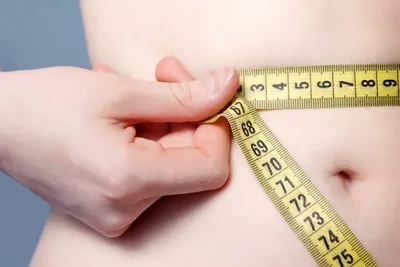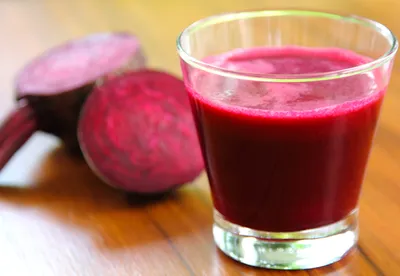Just like the Romans and Greeks, our culture of health and fitness has cultivated a wide variety of myths that cater to our desires for beauty and vitality. Some myths have stood the test of time and some have been rediscovered, dusted off, and presented as new information. What’s important for the health and fitness enthusiast is to approach each myth armed with ability to separate what is real and what is snake oil. The following presents five of the most prevalent myths as reported through TV, social media sites, or a neighbour’s best friend’s brother’s cousin…
1. Targeted Fat Reduction Is Possible
This ever-popular myth continues to influence (and disappoint) many exercisers as they perform crunch after crunch to obtain the coveted “six pack” or flat belly that is promised. This myth, known as spot reduction, has been disproved in the exercise research for decades and suggests one may target specific parts of the body for localized fat loss. The University of Connecticut conducted a study examining 107 participants after performing a resistance training program with their non-dominant arm for 12 weeks.
After an MRI was conducted on each, the findings suggested no difference in subcutaneous fat (that is fat under the skin). If spot reduction is not possible, how can one achieve the desired fat loss? A combination of cardiovascular exercise and resistance training coupled with a healthy diet (and patience) may reap the desired results…but performing 200 sit ups before bed will only result in very tired abdominal muscles.
2. Running Is The Best Exercise
Since the early 1970s, running (or jogging) has grown in popularity resulting in an industry catering to a population demanding high-tech running shirts, shorts, tights, shoes, and monitoring systems to log every step. Forbes Magazine reported a 40-fold growth in running participation from 2009 to 2014 and estimates it will continue to grow as the interest in specialized fun-based running events like colour runs and muds runs take hold. There’s no question that running is popular, but is it good for us? Although there are research studies for and against running for health, the fact is running is not the best exercise if it is not enjoyed or comfortable for the runner. In addition, and let’s face it, there are bodies built for running…and then there’s the rest of us.
The benefits of walking, cycling, swimming, and other cardiovascular alternatives are high and are equal to (and sometimes greater than) running. Take walking for example, according to the Walk BC website walking reduces the rate of chronic disease, can be done anywhere, and is relatively kind to the body without the additional impact of running. Moreover, walking outdoors can result in a reduction in mental health issues including depression. Rollerblading is also a fun and effective cardiovascular option that has been noted as delivering the same benefits of running but without the impact (although it does take a bit of skill…and a helmet).
3. Weight Loss Programs Work
With a culture so desperate to lose fat it is no wonder our preoccupation of dieting has become a $20 billion dollar industry that has exploited the desire for thinness for decades. Unfortunately the cycle of dieting is a vicious one that usually ends in increased weight gain (not to mention depression and self-hatred). No matter what the diet, no matter what foods you can or cannot eat, according to Traci Mann, associate professor at UCLA and lead author of a study examining weight loss regain over time, most people after losing 5 to 10 percent of their bodyweight will regain the weight over time. In addition, Mann suggests that diets do not lead to long term weight loss or health benefits for most dieters. So what is a weight watcher to do?
There are many considerations if one is going to stave off the fat over time. From embarking on a lifestyle change including a change in diet and physical activity to managing stress and getting 7-8 hours of sleep every night, it all relates to a reduction in fat overtime. The key to nutrition is based upon a diet of whole foods, reduction to elimination of sugar and processed foods for life (not for 6-12 weeks). Although this change may be challenging and may take many years to perfect, the investment in time and energy will not only lead to weight loss but increased energy, mental clarity, and freedom from the next diet trend.
4. To Be Fit and Healthy One Must Be Thin (a.k.a. fat is the enemy)
This myth continues to have a strong hold on our culture more than any other. This myth is insidious as it undermines the healthiest intentions as we witness high volumes of exercisers and chronic dieters putting themselves through pain and agony to lose those pesky pounds. This is probably one of the more dangerous myths of the health and fitness culture because of the nasty influence fearing fat has on us. From dangerous diets to eating disorders people put themselves through unhealthy programs and plans to lose the fat that is necessary to a life of health.
A myriad of studies have suggested that those people who are within the “overweight” and “obese” range of the Body Mass Index (BMI of 25 to over 30) are healthier and live longer than those determined as “healthy” sitting between 19 and 24 on the BMI. One landmark study out of Norway led by Hans Waaler in 1984 studied 1.7 million participants overtime. The results suggested that those in the overweight category, based upon BMI measures, had the highest life expectancy while participants in the underweight category had the lowest. Interestingly, those that were determined as “normal weight” had a lower life expectancy than some in the obese range. More recently, a study published in 2013 in the Journal of the American Medical Association, reviewed 97 studies with a combined sample of size of 2.88 million participants. The findings were similar and suggested that those defined as “overweight” by the BMI had the lowest rate of mortality and disease and those in the obese range of 30-35 was not associated with a higher rate of death. The findings of both studies gives us reason to pause and ask why put ourselves through the pain and agony of fat loss frenzy when we can enjoy life by making friends with fat.
5. Juicing is a Healthier Option
Juicing has enjoyed a comeback lately and is all the rage on social media and TV with celebrity doctors and trainers, alike, touting the latest super-food cocktails while promising vitality, great health, and a sexy body. Jennifer Nelson, a registered Dietician and editor in food and nutrition for the Mayo Clinic, underlines the pros and cons of juicing. For those people who find it challenging to eat fruits and vegetables, juicing may provide an option while delivering the vitamins, minerals, and phytonutrients we need to be healthy. Conversely, removing the juice from the fruit removes the fibre as well (fibre assists with blood sugar control and reduces risks of heart disease and other chronic diseases while creating a feeling of fullness that is helpful when one is trying to lose weight). In addition to the loss of fibre, Nelson highlights that the remaining juice may be high in sugar and may contribute to weight gain over time.
Another popular alternative to juicing is blending the fruit and veggies while keeping the pulp and fibre intact. This may slow down sugar absorption while creating a sense of fullness (especially if you add a protein such as Greek Yogurt or a nut butter such as almond or peanut). Ultimately, as Nelson underlines, the research has not yet suggested juicing as a healthier option than blending or eating the whole fruit. If it is a challenge to eat fruits and veggies, juicing may prove to be the best bet. Otherwise, it is always healthier to eat the whole food when possible.








